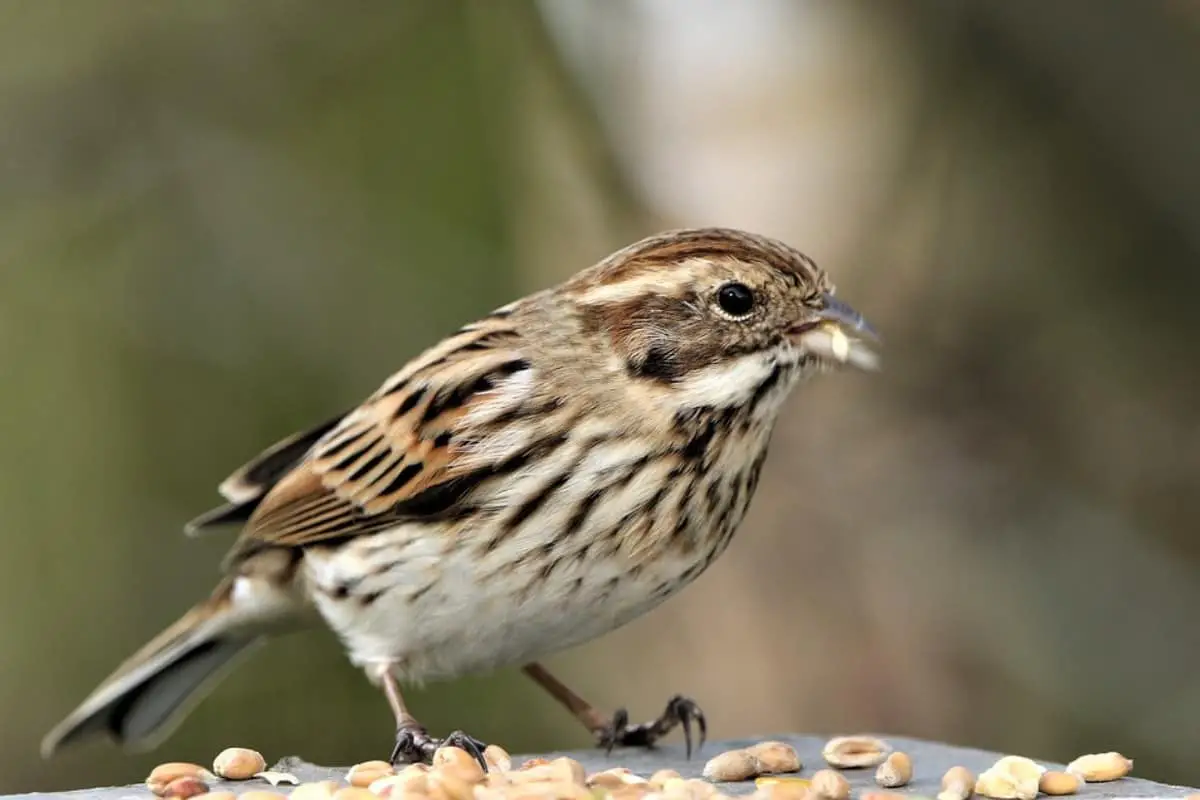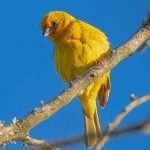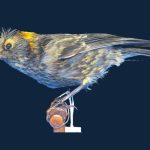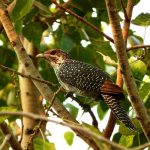Common Name: Savannah Sparrow
Scientific Name: (Passerculus sandwichensis)| Size | Diet | Range in Hawaii | Status in Hawaii |
|---|---|---|---|
| 5 in. - 6 in. | insects and seeds | Unknown | Least Concern |
The Savannah Sparrow (Passerculus sandwichensis) is a small and charming bird species that is known for its distinctive yellow eyebrow and streaked brown plumage. With its sweet song and playful behavior, this sparrow is a beloved sight in its natural habitat.
Although it is not a native species to Hawaii, Savannah Sparrows have occasionally been spotted as non-breeding visitors or vagrants, making for a rare and exciting sighting for birdwatchers. In this article, we’ll explore the fascinating world of the Savannah Sparrow and learn more about its unexpected presence in Hawaii.
Savannah Sparrow
Appearance
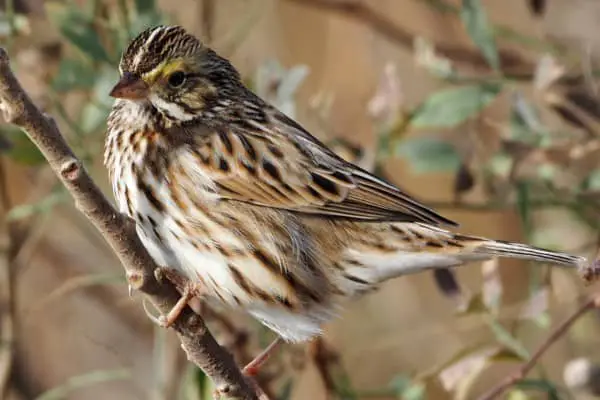
The Savannah Sparrow is a small-sized bird with a distinct appearance. On average, it measures around 5 to 6 inches (12.7 to 15.2 centimeters) in length.
The plumage of the Savannah Sparrow can vary, but it typically has a brownish or grayish upper body with streaks and mottling, providing excellent camouflage in its grassland habitats. The breast and belly are lighter in color, often with pale yellow or buff tones.
One notable feature of the Savannah Sparrow is its crown. It usually has a crown with thin dark stripes or streaks, which give it a striped or streaked appearance on top of its head. This crown pattern can vary among subspecies.
The bill of the Savannah Sparrow is short and pointed, well-suited for foraging on the ground for insects and seeds. Its legs are relatively long compared to its body size, adapted for navigating through grasses and meadows.
Diet
The Savannah Sparrow has an omnivorous diet that primarily consists of insects and seeds. As a ground-dwelling bird, it forages on or near the ground, using its short, pointed bill to search for food.
In terms of insects, the Savannah Sparrow feeds on a variety of small invertebrates such as beetles, grasshoppers, spiders, caterpillars, and ants. It may also consume other arthropods found in its habitat, including small snails and earthworms.
When it comes to seeds, the Savannah Sparrow consumes a range of grass and weed seeds. This includes the seeds of various grasses, sedges, and flowering plants that are available in its environment. During the non-breeding season when insects may be less abundant, seeds play a more significant role in its diet.
The Savannah Sparrow’s feeding behavior is often observed in grasslands, meadows, and open areas with low vegetation, where it can easily access its preferred food sources. It typically forages by hopping or walking on the ground, occasionally pausing to probe the soil or pluck seeds from plants.
Nesting
The Savannah Sparrow follows a typical nesting pattern for many ground-nesting songbirds. It constructs its nest on the ground, usually hidden within vegetation or grasses, providing camouflage and protection.
The nest of the Savannah Sparrow is a cup-shaped structure made primarily of grasses, stems, and leaves. The interior of the nest is lined with finer materials such as feathers, hair, or plant fibers. The female takes the primary responsibility for building the nest, while the male may assist in gathering materials.
The location of the nest is carefully chosen to provide concealment and protection from potential predators. It is often situated in dense vegetation or among tufts of grass, which help to camouflage the nest and make it less visible.
Once the nest is constructed, the female Savannah Sparrow lays a clutch of typically three to five eggs. The eggs are usually pale in color with brown or gray markings, blending in with the surrounding environment. The female incubates the eggs for about 12 to 14 days until they hatch.
Both parents share the duties of feeding and caring for the young once they hatch. They bring a variety of insects, spiders, and small invertebrates to the nest to provide nourishment for the growing chicks.
The nesting period for the Savannah Sparrow varies depending on the region and climate, but it generally occurs during the spring and summer months when food resources are abundant. After the young birds fledge, they become independent and gradually disperse from the nest site.
Behavior

The Savannah Sparrow exhibits a range of behaviors that contribute to its survival and communication within its habitat. Males are known for their complex and diverse song repertoire, singing to defend their territories and attract mates.
They establish and defend territories during the breeding season, using songs, visual displays, and aggressive behaviors to ward off intruders. Ground foraging is a key behavior of Savannah Sparrows, as they hop and walk on the ground in search of insects, spiders, seeds, and small invertebrates.
They construct their nests on the ground, hidden within vegetation, with the female taking the lead in nest-building and both parents participating in incubating the eggs and caring for the young. Savannah Sparrows undertake seasonal migrations, with populations in northern regions traveling south for the winter.
While typically solitary, they may form loose flocks during migration or foraging. Flight displays are common during courtship and territorial disputes, involving aerial maneuvers and fluttering flights.
Both parents contribute to parental care, providing food and protection to the fledglings. These behaviors reflect the species’ adaptation to grassland habitats and its strategies for survival, communication, and reproduction.
Habitat
The Savannah Sparrow (Passerculus sandwichensis) is a bird species associated with a diverse range of habitats across its extensive range. It is primarily found in open areas and grasslands, but its habitat preferences can vary depending on the subspecies and regional populations.
In general, the Savannah Sparrow thrives in habitats such as grasslands, meadows, prairies, and fields. It is well adapted to areas with a mixture of low vegetation, including grasses, sedges, and scattered shrubs. Such habitats provide ample foraging opportunities and suitable nesting sites for the species.
Range
The Savannah Sparrow is a bird species that is primarily distributed throughout North America. However, there have been a few rare sightings of Savannah Sparrows in the Hawaiian Islands, specifically on Kure Island and Tern Island. These sightings indicate that the species has reached the remote Northwestern Hawaiian Islands as vagrants.
Conservation Status
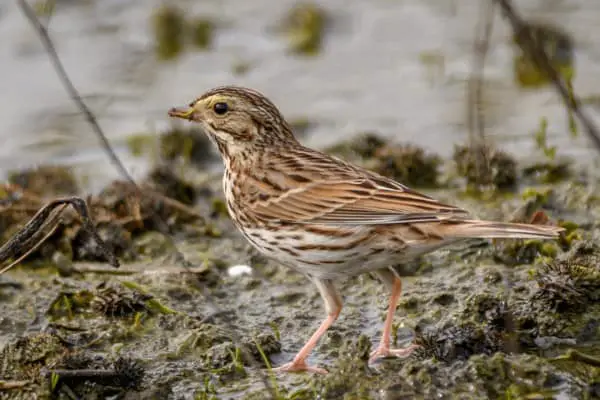
The Savannah Sparrow is currently listed as a species of “Least Concern” by the International Union for Conservation of Nature (IUCN). This designation indicates that the species has a large population size and is not facing immediate threats or significant population declines.
Savannah Sparrows have a wide distribution across North America and are adaptable to various grassland and open habitats. They are not currently considered at high risk of extinction on a global scale. However, localized declines and threats may exist in certain regions or specific populations.
Interesting Facts
1. Unique crown stripes
One distinguishing feature of the Savannah Sparrow is the crown with thin dark stripes or streaks, which can help differentiate it from other sparrows.2.
2. Melodious song
Male Savannah Sparrows are known for their complex songs, consisting of a series of musical trills, buzzes, and high-pitched notes. Each male has its own unique song.
3. Ground-nesting behavior
Like many grassland birds, Savannah Sparrows construct their nests on the ground, usually hidden within vegetation, to provide camouflage and protection.
4. Shared parental care
Both male and female Savannah Sparrows participate in incubating the eggs and caring for the young after hatching, contributing to the survival and development of their offspring.
5. Vocal mimicry
While not as proficient as some other songbirds, Savannah Sparrows can mimic the songs of other bird species and imitate certain sounds in their environment.
Frequently Asked Questions
1. Are Savannah Sparrows monogamous?
Yes, Savannah Sparrows are monogamous during the breeding season. Males and females form pairs and share responsibilities in nest building, incubation, and caring for the young.
2. How long do Savannah Sparrows live?
The average lifespan of Savannah Sparrows in the wild is typically around 5 to 6 years. However, some individuals can live up to 10 years or more under favorable conditions.
3. Can Savannah Sparrows mimic other bird species’ songs?
While Savannah Sparrows can mimic certain sounds, their ability to imitate other bird species’ songs is not as extensive as some specialized songbirds. They may mimic simple tunes or sounds they encounter in their environment.
